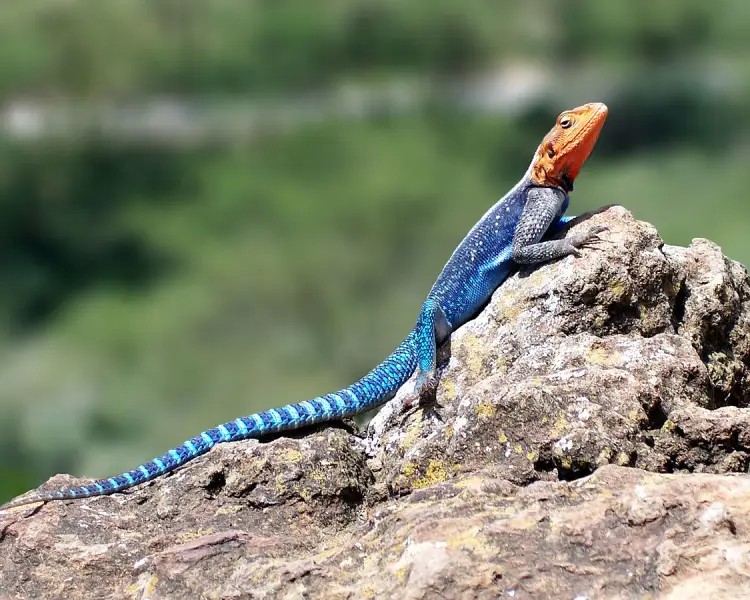When rocks are cleared for buildings, roads, or quarries, the agama’s tiny world begins to vanish. The message of this year’s theme resonates deeply in counties like Samburu, where urban growth continues to transform local environments.
The old nature joke goes, “Why don’t Rock Agamas ever get lost? Because they always stick to their rocks.”
This light-hearted line echoes a deeper truth about the importance of habitat and belonging especially as the world recently celebrated World Habitat Day!
Every year, on the first Monday of October, the world comes together to observe World Habitat Day, a moment set aside to reflect on the meaning of home for both people and wildlife. This year’s
theme, “Urban Crisis Response,” encourages communities to reevaluate how development and urban growth impact the natural spaces that sustain life.
In Samburu National Reserve, one small but striking creature captures that message perfectly: the Rock
Agama, also known as
Agama lionotus. Often seen relaxing on sun-heated stones or old walls, this lizard is a flash of colour in the dry landscape. Males wear bright orange heads with blue-grey bodies and glow like sparks against the rocks—a vivid symbol of endurance in the heat and dust.
The Rock Agama
thrives in dry, rocky places where it can bask in the morning sun and hide in cool cracks when temperatures rise. Its diet consists mainly of insects, and it moves with quick bursts of speed that demonstrate how well it has adapted to its surroundings. Scientists have classified it as a “Least Concern” species, meaning it is not endangered—but its safety depends on the health of its habitat.
When rocks are cleared for buildings, roads, or quarries, the agama’s tiny world begins to vanish. The message of this year’s theme resonates deeply in counties like Samburu, where urban growth continues to transform local environments.
Every hill, stone ridge, or dry riverbed harbours a small ecosystem, a delicate network of life. When we ignore these smaller habitats, we risk losing the balance that sustains larger systems. The rock agama’s shrinking home is an early sign of those changes.
Imagine yourself standing on a rocky hillside in the midday sun. The air ripples with heat, and a whiff of dust drifts on the breeze. Out of the blue, a bright orange head peeps out from behind a stone. The Agama nods, watchful and proud, as if defending its tiny kingdom. Now picture returning one day to find the rocks gone, levelled for construction and the creature nowhere to be seen. That’s how habitat loss begins silently, one stone at a time.
World Habitat Day reminds us that “habitat” does not only refer to forests, mountains, or oceans; it also includes the tiniest cracks in stone, the dry ridges near a household, and the rocky paths that border our roads. Protecting these often-overlooked spaces ensures that every form of life, no matter how small, continues to have a home.
So the next time you come across a bright lizard basking on a wall or rock, take a moment to notice it—and appreciate the beauty of nature.
The Samburu Rock Agama’s story is not just about survival; it’s a reflection of how closely tied our own well-being is to the land we share. To protect our future, we must also defend theirs.
Love stories like this? Dive deeper into nature—follow us on WhatsApp and Facebook for more biodiversity gems!

